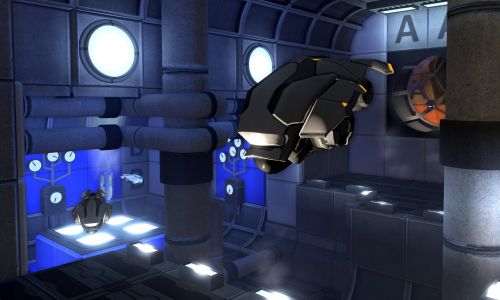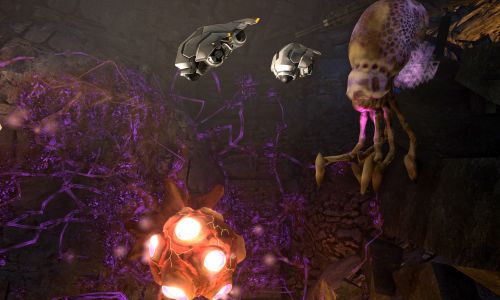
Designing for Co-Op
Harnessing the presence of a second player involves more than just scaling encounter difficulty. Sure, many games get by with a few more enemies, but is that truly co-operative play? Portal 2 showed the world what was possible when an experience was designed from the ground up for co-op. Every switch was placed, and every portal surface tiled with the complexity of a partner factored in. This forces players to rely on their partner, not just as another gun on target, but as an extension of themselves.
Not every game needs to accomplish this aim with such rigidity. Borderlands accomplished it by character customization, allowing the perks that each player grew into to drive reliance. The introduction of new play styles and classes fundamentally changed the tools available to the group when placed under stress. In addition to allowing players to express their identity in their social group through a play style, the play styles themselves helped to cover weaknesses in teammates as new skills were acquired. The formula for Borderlands’ co-op seems to be something like diversity plus stress equals cooperation.
We will have the aim of player co-dependence with Retrovirus’ co-op mode. Our single player campaign will be reworked to include new puzzles in places where adding a second player demands a separate set of challenges. For now, we’re looking at up to four friends being able to play through the campaign together. Each player will be able to customize their roles to accentuate the group’s capabilities and cover for the deficiencies of their friends. Our weapons system lets players set up combinations of triggered effects together, creating team synergy.
We have a lot of work ahead of us, but we are convinced of co-op’s value. From the start of Retrovirus’ development, we were committed to developing multiplayer beyond just the basic competitive flavors.

Where Are We Going?
Retrovirus is still under development, but we’re starting to open up our studio to the world. We like having people give us feedback, and sharing our work early helps too, as we’re forced to regularly reassess our work.
We’ve been doing a livestream weekly on Wednesday nights (6:00pm US pacific time). The stream is focused on level design and live playtesting. Sometimes the stream’s final product is a bit raw, but we’ve found it fun and valuable to talk directly with new fans. Come join us in the stream chat if you want to talk co-op! We also have a blog on our site, and we’ll be putting up more edited video content in the months to come. Retrovirus is already starting to feel like a solid game, and we’d love to have you join us as we sand away the rough edges and search on for what’s going to make this game fun.
- Dylan Barker, Game Designer for Cadenza Interactive
Are you an indie developer with a co-op game and would like to share your own development story? Let us know by dropping a line to indie@co-optimus.com!